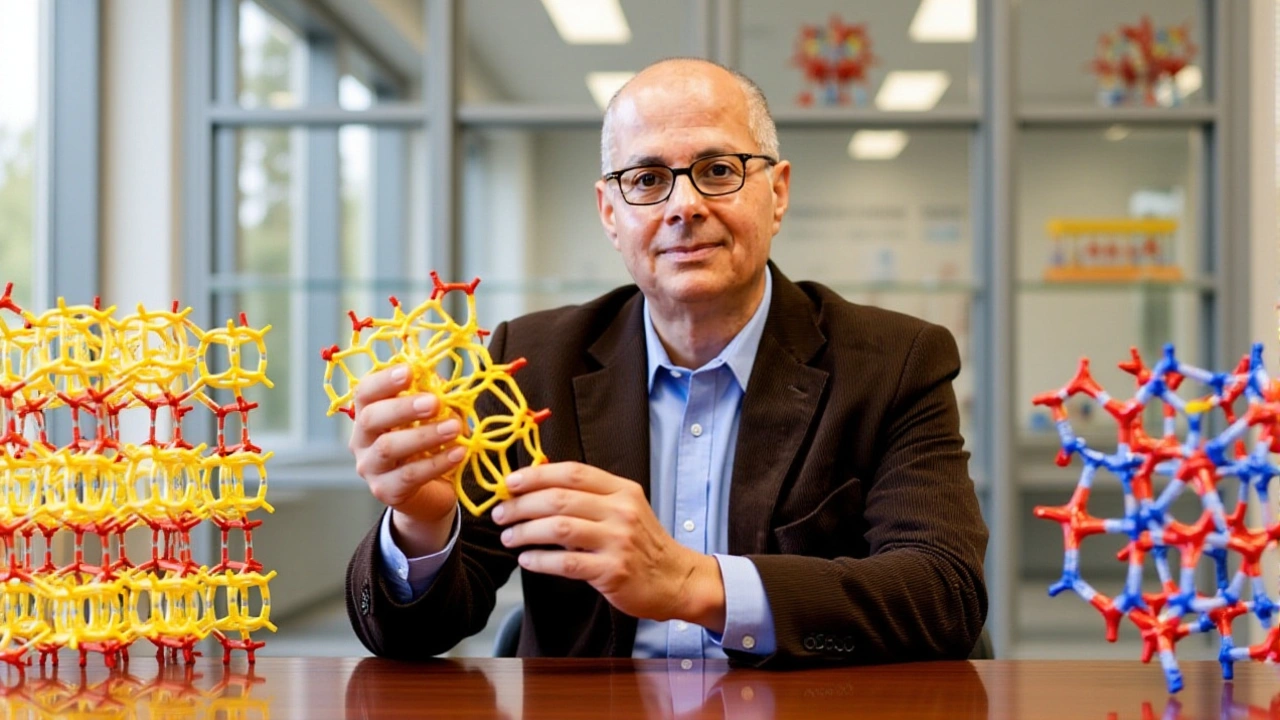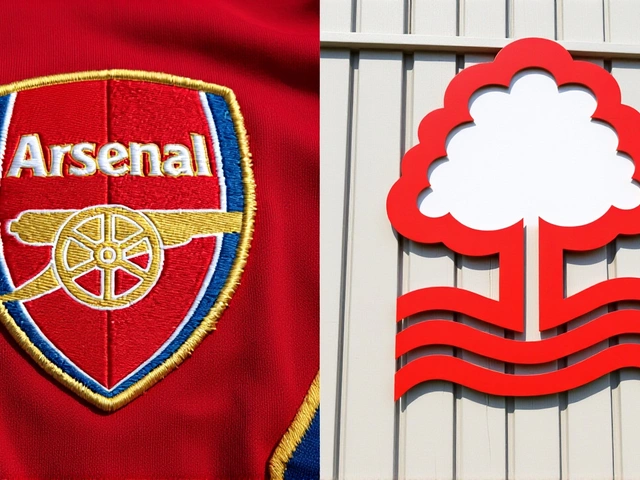When Omar M. Yaghi, The James and Neeltje Tretter Professor of Chemistry at University of California, Berkeley received the Nobel Prize in Chemistry on October 8, 2025, the scientific world practically stopped to listen. The Royal Swedish Academy of Sciences announced that Yaghi shared the honor with Susumu Kitagawa of Kyoto University and Richard Robson of University of Melbourne for pioneering metal‑organic frameworks (MOFs). Their discovery reshapes how we think about capturing gases, storing energy and even pulling water out of desert air.
Background of Metal‑Organic Frameworks
MOFs are essentially molecular scaffolds where metal ions or clusters are linked by organic ligands, forming crystal lattices riddled with gigantic pores. Because the surface area inside a single gram of some MOFs can exceed 7,000 m²—roughly the size of a tennis court—their capacity to adsorb gases is unprecedented.
The trio’s work, first reported in the early 2000s, introduced the concept of “reticular chemistry,” a term Yaghi himself coined while at University of Arizona as a post‑doc. By carefully choosing metal nodes and organic linkers, researchers can tailor pore size, chemical affinity and stability, turning a generic sponge into a highly selective filter.
The Nobel Announcement and Immediate Reactions
The award news broke at 6:00 AM CET from the Royal Swedish Academy of Sciences, which issued a press release under its Royal Swedish Academy of Sciences banner. Heiner Linke, Chair of the Nobel Committee for Chemistry, said, “Metal–organic frameworks have enormous potential, bringing previously unforeseen opportunities for custom‑made materials with new functions.”
Yaghi was en route through Frankfurt Airport to a conference in Brussels when he learned of the honor via a phone call. He later told reporters, “It’s a validation of decades of work that began in a modest lab at UC Berkeley, driven by the belief that chemistry can solve real‑world problems.”
Yaghi’s Journey to the Nobel
Born in Amman, Jordan, Yaghi moved to the United States at 15, eventually enrolling at Hudson Valley Community College before earning a B.S. cum laude from the University at Albany, SUNY in 1985. After a stint at Arizona State University, he joined UCLA, where he introduced the term “reticular chemistry” and built the first generation of MOFs.
In 2005, Yaghi accepted the Berkeley chair, establishing the Yaghi Research Group. One breakthrough came in 2015 when his team demonstrated a MOF that could harvest water from air at relative humidities as low as 20 %. The prototype, a compact “atmospheric water harvester,” can produce up to five liters of potable water per day—enough for a small family in the Sahara.
The laboratory spun off a startup, WaterHarvest LLC, which now sells microwave‑sized units to NGOs operating in arid regions of Kenya and Arizona.
Implications for Climate and Water Technologies
Beyond water, MOFs are being engineered to capture carbon dioxide directly from power‑plant flues. In a pilot plant near Houston, a MOF‑based filter removed 95 % of CO₂ from a 100 MW natural‑gas turbine, cutting emissions by roughly 9,300 tonnes per year.
Energy storage is another hot arena. Researchers have loaded lithium ions into MOF pores, creating batteries that charge three times faster than conventional lithium‑ion cells while maintaining safety.
The Nobel Committee highlighted these applications, noting that “the work opens new frontiers in clean energy development, environmental remediation, and sustainable water collection.” With climate change tightening the global water budget, Yaghi’s MOFs could become the missing link between drought‑prone communities and reliable freshwater supplies.

Future Steps and Commercial Outlook
In the months after the announcement, James B. Milliken, President of University of California, praised the achievement as “a testament to the power of fundamental research to generate transformative technologies.”
Yaghi’s lab is now collaborating with Shell Energy to scale MOF‑based carbon capture for offshore rigs. Simultaneously, Havidán Rodríguez, President of the University at Albany, reminded alumni that “the curiosity nurtured here has now shaped a global solution to one of humanity’s most pressing challenges.”
The formal award ceremony will occur on December 10, 2025, in Stockholm, Sweden, where each laureate will receive 11 million Swedish kronor—about $1.05 million USD—shared equally.
Key Facts
- Prize: 2025 Nobel Prize in Chemistry
- Laureates: Omar M. Yaghi (UC Berkeley), Susumu Kitagawa (Kyoto University), Richard Robson (University of Melbourne)
- Core achievement: Development of metal‑organic frameworks (MOFs)
- Commercial impact: WaterHarvest LLC devices produce up to 5 L/day from desert air
- Award ceremony: December 10, 2025, Stockholm
Frequently Asked Questions
How might the Nobel award accelerate water‑scarcity solutions?
The spotlight brings funding agencies and private investors to projects like WaterHarvest LLC. Expect larger‑scale pilot plants in the Middle East and Southwest U.S., where MOF‑based harvesters could supply up to 30 % of a community’s daily water demand.
What exactly are metal‑organic frameworks?
MOFs are crystalline solids made from metal ions connected by organic linkers, forming a lattice riddled with nanometer‑sized pores. Their tunable chemistry lets scientists design materials that selectively capture gases, store energy, or adsorb water vapor.
Who are the co‑laureates sharing the Chemistry Nobel with Yaghi?
Susumu Kitagawa of Kyoto University and Richard Robson of University of Melbourne were honored for parallel breakthroughs in designing porous structures that enable gas storage and catalysis.
When and where will the Nobel ceremony take place?
The ceremony is scheduled for December 10, 2025, in Stockholm, Sweden, the traditional venue for unveiling the Nobel laureates and presenting the medals.
What commercial applications beyond water harvesting are emerging from MOF research?
Industries are piloting MOFs for carbon‑capture units at fossil‑fuel plants, high‑capacity battery electrodes, and even drug‑delivery platforms that release therapeutics in response to specific molecular triggers.





